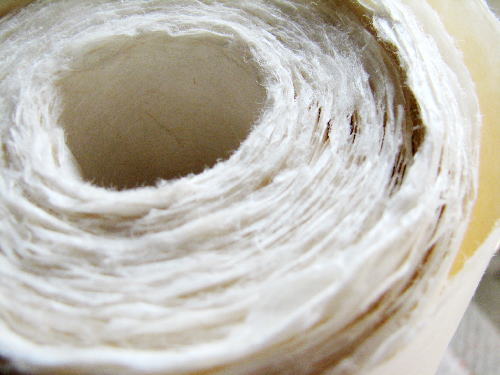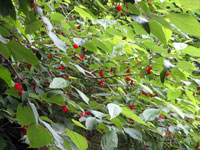Washi History
What is WASHI, Architectural Parchment? — Washi (wah -shee) sheets are plant- based parchment made from sustainably harvested extra fine bark fiber and organic pigments. Our premium Washi parchment is designed in NY and made in our studios by artisans who continue to use traditional techniques. Precious Pieces/ Hiro Odaira is a full-service design/fabrication/installation firm specializing in large, handcrafted, and unique Washi parchment for interior and exterior design, in fusion with customized wood work, glass work, and drapery/screen work.
 Washi, architectural parchment, brings ethereal beauty to any setting. Washi is made from a sustainable harvested inner white bark fiber. Instead of cutting tree in western method, these plant can be harvested repeatedly every year.
Washi, architectural parchment, brings ethereal beauty to any setting. Washi is made from a sustainable harvested inner white bark fiber. Instead of cutting tree in western method, these plant can be harvested repeatedly every year.
History
The art of papermaking was brought to Japan by Buddhist monks in the year 610 AD. By the late 1800’s, more than 100,000 families were hand crafting paper in Japan. Japanese start using not only writing on drawing paper for interior, exterior and products such as shoji screens, fusuma doors, lamps, clothing, umbrellas, fans, and others. Japanese house was made by wood and paper for centuries. With the introduction of the European paper-making machinery, the number of families crafting paper gradually declined. By 1983, only 479 of them continued this practice. The remaining families worked diligently to preserve their respected craft.
Process <Pictorial Description (PDF 887KB)>
Washi is made from the elongated fibers of a variety of plants. The mulberry plant is the primary plant used. The fibers are stripped, cleaned, pounded and stretched. They are then mixed in a solution made from tororo-aoi, a variety of sticky mountain potatoes. The mixture is spread thinly and evenly across bamboo screens, where it is then left to dry. The resulting paper is both durable and beautiful.
Kobo (Studio) in Japan & New York City
The artisans have been making washi for over 500 years. Today, they make washi using the same techniques and expertise that made it the emperor’s favorite so long ago. In NYC, a design studio uses these traditional techniques and enhances them to create smaller projects.
►Washi Making Process
►Sustainability
►Product Overview
►Thank You to Our Artisans in Japan for Sharing Their Craft
Our Goal
1. Respect Nature
We provide a comfortable lifetsyle in partner with nature. We hope that Earth will always be simple and beautiful. Our services offer a well designed lifestyle in corporation of natural materials.
2. Share the Pleasure of Handcrafts
We challenge the current consumerism and industrialized production society by creating as much as possible by hand, and sharing the joy of ?andicrafts·with as many people as possible.
3. Create Imaginatively
Breaking away from the status quo, we draw from our own experience and senses to think and create imaginatively. We wish to provide customers new and innovative ideas. We continue to provide information for better understanding by the American society.
4. Explore Adventurously
New York embraces people of different nationalities, pasts, and ages in its melting pot. Emulating its passion, curiosity, adventurous spirit, and most importantly, progress, our challenge lies in bringing about the marriage of the environment and products that will be both exciting and comforting.
5. Express the Love for Japan
We wish to play the role of creating a positive relationship with Japan, using our unique products and methods to bridge the cultures. We strive to present a lifestyle of which we Japanese can be proud.
